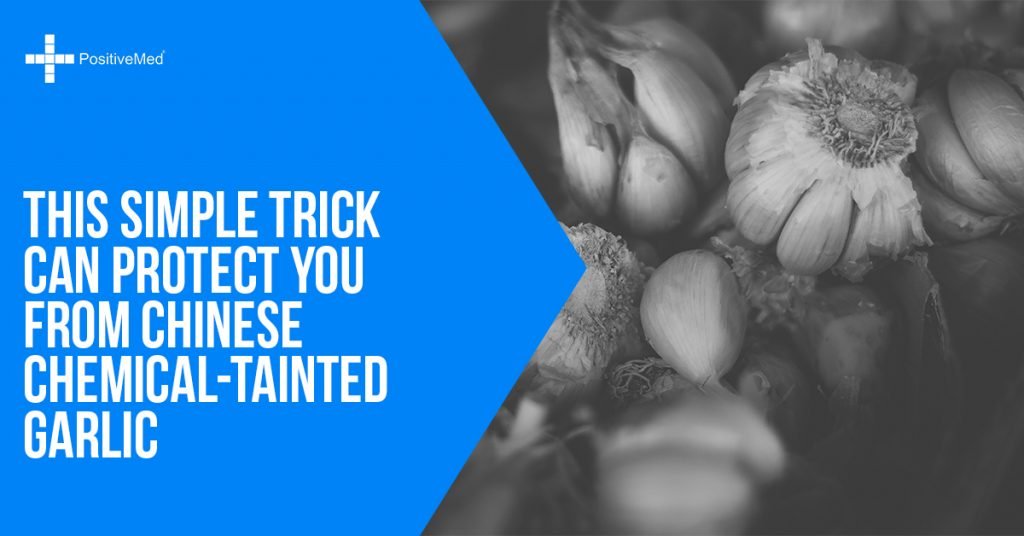California used to be the U.S.’s primary supplier of garlic, but no more. Now, up to 30% of U.S. garlic actually comes from China. Chinese garlic is not grown, harvested, or shipped following the safety regulations that domestic garlic is. If you buy and use garlic from China, you may be ingesting harmful chemicals without your knowledge. Fortunately, a look-over should allow you to tell whether your garlic is domestic or Chinese.

Chinese garlic is often irrigated with dangerous pesticides. Two, in particular, are Phorate and Methyl parathion are toxins that damage the nervous system. This harms both organisms in the soil and people who come in contact with it. Since it travels long distances, Chinese garlic is treated with bleach to inhibit bugs and mold and keep its appearance. Not only are these chemicals not safe to eat, but they also damage the environment.
Related article: Most Brands of Tea Contain These Harmful Chemicals!
Even without treating the garlic itself, growing conditions in China are not helpful for producing healthy plants. Unchecked industrial pollution has led to high levels of cadmium and other toxic heavy metals in the water and soil. Many crops are irrigated using untreated sewage or water containing industrial chemicals. Not only can these be taken up by crops, but garlic is also in constant contact with the tainted soil. Simple washing, soaking, or peeling may not even be enough to make it safe to eat.
Even if Chinese garlic weren’t grown under suspect conditions, locally grown garlic is better for your health. The antifungal, antibacterial, and antiparasitic component of garlic — allicin — is naturally converted from alliin when fresh garlic is chopped. Garlic stored for a long time has much lower levels of alliin, which creates much lower levels of allicin. Shipping garlic around the world involves storing it for long periods of time. That means that even safely-grown imported garlic is less healthful than domestic garlic.
How to spot it:
The best way to spot Chinese garlic is to look for weight-cutting measures. Since it’s expensive to ship tons of garlic overseas, Chinese suppliers try to save money by reducing weight. Chinese garlic will generally be smaller, lighter, and more slender than domestic garlic. It will almost always have any extra weight (like the roots and stem) trimmed off. If you have tasted domestically-grown garlic, Chinese garlic will not taste as rich or flavorful when you compare the two.
It’s always better to buy locally-grown produce whenever it’s available. It creates less harm to the environment because it doesn’t need to be shipped for long distances. Domestic produce is grown under stringent safety guidelines, and it often tastes better. Spotting Chinese garlic can also mean the difference between fresh garlic and old garlic full of chemicals and bleach.
Alternatively, you can grow your garlic in a container and you’ll get fresh and organic garlic from your own kitchen!






